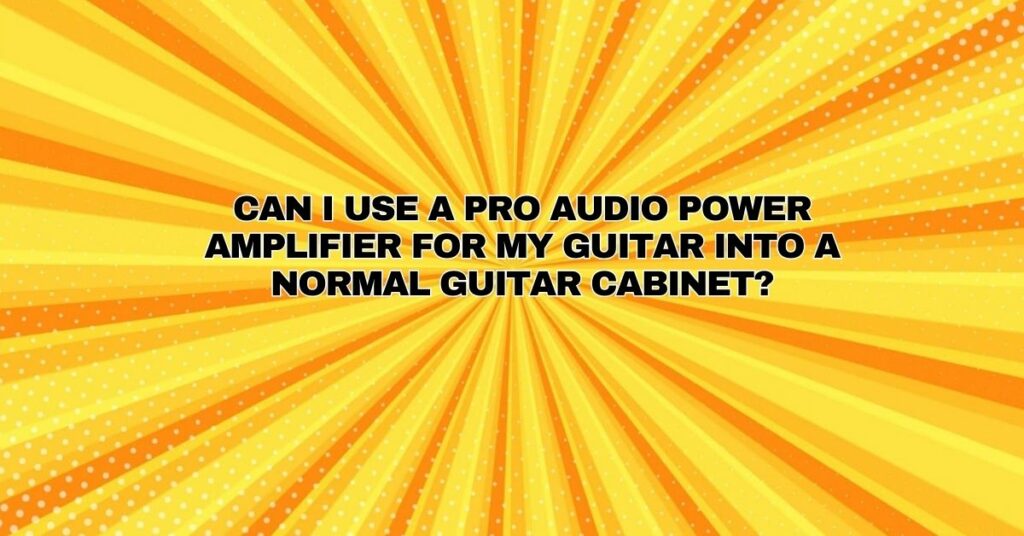Guitarists are often curious about the possibility of using pro audio power amplifiers with standard guitar cabinets. While pro audio power amplifiers are typically associated with sound reinforcement systems, they can indeed be used in a guitar setup. In this comprehensive guide, we will explore the compatibility, benefits, and considerations of using a pro audio power amplifier with a guitar cabinet, helping you make an informed decision for your setup.
Compatibility and Benefits
1. Power and Versatility: Pro audio power amplifiers are designed to deliver substantial power, making them capable of driving guitar cabinets with authority. This extra headroom can provide clean, dynamic, and high-volume performance.
2. Cost-Effective Solution: Pro audio power amplifiers can be cost-effective options compared to some dedicated guitar amplifiers. If you already own a pro audio power amp, repurposing it for your guitar rig can save you money.
3. Flexibility: Pro audio power amplifiers often feature versatile input and output options, allowing you to connect various instruments and audio sources. This flexibility can be advantageous if you have a multi-instrument setup.
Considerations and Challenges
While using a pro audio power amplifier with a guitar cabinet is possible, there are important considerations and challenges to keep in mind:
1. Impedance Matching: One of the primary challenges is impedance matching. Guitar cabinets typically have specific impedance ratings, often 4, 8, or 16 ohms. Pro audio power amplifiers might have different impedance outputs. Ensure that the impedance output of the power amplifier matches the impedance rating of your guitar cabinet to avoid potential damage to your gear.
2. Tone Control: Unlike guitar amplifiers that come with built-in tone-shaping controls, pro audio power amplifiers often lack such features. You may need to use external equalization or signal processing to shape your guitar’s tone to your liking.
3. Overdrive and Distortion: Many guitarists rely on the overdrive and distortion characteristics of dedicated guitar amplifiers to achieve their desired tone. Pro audio power amplifiers may not provide the same level of harmonic distortion and overdrive. You may need to use external effects pedals or preamps to achieve these effects.
4. Pedalboard and Effects Integration: If you use a pedalboard with effects, you should consider how your effects chain integrates with a pro audio power amplifier. Some guitar amplifiers feature effects loops, which can simplify this integration. You may need to reconfigure your pedalboard or routing to work effectively with a pro audio setup.
5. Size and Portability: Pro audio power amplifiers tend to be bulkier and heavier than compact guitar amplifiers, which can affect portability, especially if you’re frequently gigging or moving your gear.
Signal Level and Sensitivity: Pro audio gear is designed to handle line-level signals, which are typically higher than the instrument-level signals from guitars. You might need a DI (Direct Input) box to match the signal level to the power amplifier’s input.
Conclusion
Using a pro audio power amplifier with a guitar cabinet can be a viable option, but it requires careful consideration and planning. Ensure that the impedance and signal level are compatible, and be prepared to address tone control, overdrive, and distortion effects. The choice ultimately depends on your specific needs and preferences. If you have the right gear, technical know-how, and are willing to make the necessary adjustments, using a pro audio power amplifier can expand your tonal options and provide a cost-effective solution for your guitar setup.


